Dell Latitude 13 7320 Detachable review – are “detachables” the new trend?
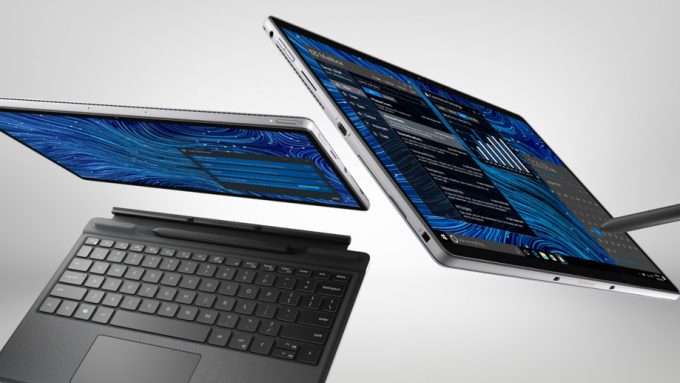 You know tablets were hardly in the spotlight of professional work (excluding graphic tablets). However, ever since Apple announced their first iPad Pro, the question of them completely replacing the computer as we know it today arose. It was a couple of years before Dell bought into this trend. Hence, we are treated to devices like today’s hero – the Latitude 13 7320 2-in-1. Ultimately, Microsoft was a company very fond of popularizing the tablet. How they did it? Well, they packed everything you need for your daily usage into its chassis and everything else – like the graphics card, extra cooling, and a bigger battery – into the keyboard enclosure.
You know tablets were hardly in the spotlight of professional work (excluding graphic tablets). However, ever since Apple announced their first iPad Pro, the question of them completely replacing the computer as we know it today arose. It was a couple of years before Dell bought into this trend. Hence, we are treated to devices like today’s hero – the Latitude 13 7320 2-in-1. Ultimately, Microsoft was a company very fond of popularizing the tablet. How they did it? Well, they packed everything you need for your daily usage into its chassis and everything else – like the graphics card, extra cooling, and a bigger battery – into the keyboard enclosure.
Respectively, Dell’s approach is fundamentally different. Instead of going all-in on performance, they seek marriage between the software and the hardware. As you know, the Latitude series is all about security, privacy, and stability. Well, here you have an IR face recognition sensor array, as well as a fingerprint reader on the back.
Additionally, there are two 8MP cameras, one on the back, and one in the front. Both of them can shoot in 1080p at 30fps.
You can check the prices and configurations in our Specs System: https://laptopmedia.com/series/dell-latitude-7320-detachable/
Contents
Specs Sheet
- Mostrar
- 13.0”, FHD+ (1920 x 1280), IPS
- HDD/SSD
- hasta 1000GB SSD
- RAM
- up to 16GB
- OS
- Windows 10 Pro, Windows 10 Home
- Batería
- 40Wh, 2-cell, 40Wh, 3-cell
- Dimensiones
- 288.42 x 207.90 x 8.44 mm (11.36" x 8.19" x 0.33")
- Peso
- 0.78 kg (1.7 lbs)
- Puertos y conectividad
- 2x USB Type-C
- Thunderbolt 4, Power Delivery (PD), DisplayPort
- Lector de tarjetas
- Ethernet LAN
- Wi-Fi
- 802.11ax
- Bluetooth
- 5.1
- Conector de audio
- 3.5mm Combo Jack
- Micro SIM
- Features
- Lector de huellas dactilares
- Cámara web
- 2x 8MP World Facing Cameras
- Teclado retroiluminado
- Micrófono
- 2x Omni-Directional Noise Cancelling Microphones
- Altavoces
- 2x 2W, Stereo Speakers
- Unidad óptica
- Ranura de bloqueo de seguridad
- Wedge Lock Slot
Todo Dell Latitude 7320 Detachable configuraciones
What’s in the box?
Inside the package, you will find the Latitude 13 7320, its detachable keyboard, a 65W USB Type-C power brick, and a stylus.
Design and construction
It is good to see, that in contrast to the smaller and older Latitude 12 7210, today’s notebook actually looks like it is made in 2021. This is mainly due to its slim bezels. Also, it feels sturdy thanks to its aluminum enclosure and glass display cover.
In terms of measurements, we are talking about a thickness of 8.44mm, and a weight of 790 grams. Ultimately, this may be considered as heavy for a tablet, but when you combine it with the keyboard, it is still significantly lighter than other 13-inch convertibles.
Speaking of the keyboard, it is your main portal to the laptop world. The thing, that makes this device even a far relative to the notebooks. Ultimately, the keycaps are small, but they offer good feedback, and surprisingly long key travel, considering the thickness. Additionally, the touchpad provides a smooth gliding experience, as well as adequate tracking. However, probably because it is an external component, there is a slight delay in the input recognition when you haven’t used it for about half a minute.
On the other hand, the smooth and soft texture of the palm rest is really easy on the hands. In addition to that, the top side of the detachable keyboard has magnets that can be attached to the bottom bezel of the screen, thus providing better ergonomics for typing.
Not in the last place, there is the stand, which offers a wide variety of sitting positions. Interestingly, this device has two fans, which draw cool air from one slot on either side and exhaust the hot air throw two vents on the top. By the way, as a typical tablet, it sports a set of volume rockers on the left side and a power button in the right half of the top side. Although it’s good to have dedicated buttons, they feel a bit mushy.
Ports
In contrast to the older Latitude 12 7210 (2-in-1), today’s notebook only features two Thunderbolt 4 connectors and an audio jack. Also, some units feature a SIM card tray.
Display quality
Dell Latitude 13 7320 Detachable in the configuration we tested has a touchscreen IPS display, model number NW3NF LQ130N1 (INT3480). Its diagonal is 13.0″ (33.0 cm), and the resolution – 1920 x 1280p. Additionally, the screen ratio is 3:2, the pixel density – 178 ppi, their pitch – 0.14 x 0.14 mm. The screen can be considered Retina when viewed from at least 48 cm (from this distance, the average human eye can’t see the individual pixels).

Its viewing angles are excellent. We have provided images at 45 degrees to evaluate quality.

The maximum measured brightness is 496 nits (cd/m2) in the middle of the screen and 471 nits (cd/m2) average across the surface with a maximum deviation of 9%. The Correlated Color Temperature on a white screen and at maximum brightness is 6430K (average) – slightly warmer than the 6500K optimum for sRGB.
In the illustration below you can see how the display performs from a uniformity perspective. The illustration below shows how matters are for operational brightness levels (approximately 140 nits) – in this particular case at 45% Brightness (White level = 142 cd/m2, Black level = 0.08 cd/m2).
Values of dE2000 over 4.0 should not occur, and this parameter is one of the first you should check if you intend to use the laptop for color-sensitive work (a maximum tolerance of 2.0 ). The contrast ratio is very good – 1700:1.
To make sure we are on the same page, we would like to give you a little introduction to the sRGB color gamut and the Adobe RGB. To start, there’s the CIE 1976 Uniform Chromaticity Diagram that represents the visible specter of colors by the human eye, giving you a better perception of the color gamut coverage and the color accuracy.
Inside the black triangle, you will see the standard color gamut (sRGB) that is being used by millions of people on HDTV and on the web. As for the Adobe RGB, this is used in professional cameras, monitors, etc for printing. Colors inside the black triangle are used by everyone and this is an essential part of the color quality and color accuracy of a mainstream notebook.
Still, we’ve included other color spaces like the famous DCI-P3 standard used by movie studios, as well as the digital UHD Rec.2020 standard. Rec.2020, however, is still a thing of the future and it’s difficult for today’s displays to cover that well. We’ve also included the so-called Michael Pointer gamut, or Pointer’s gamut, which represents the colors that naturally occur around us every day.
The yellow dotted line shows Dell Latitude 13 7320 Detachable’s color gamut coverage.
Its display covers 100% of the sRGB/ITU-R BT.709 (web/HDTV standard) in CIE1976.

Our “Design and Gaming” profile delivers optimal color temperature (6500K) at 140 cd/m2 luminance and sRGB gamma mode.
We tested the accuracy of the display with 24 commonly used colors like light and dark human skin, blue sky, green grass, orange, etc. You can check out the results at factory condition and also, with the “Design and Gaming” profile.
Below you can compare the scores of Dell Latitude 13 7320 Detachable with the default settings (left), and with the “Gaming and Web design” profile (right).
The next figure shows how well the display is able to reproduce really dark parts of an image, which is essential when watching movies or playing games in low ambient light.
The left side of the image represents the display with stock settings, while the right one is with the “Gaming and Web Design” profile activated. On the horizontal axis, you will find the grayscale, and on the vertical axis – the luminance of the display. On the two graphs below you can easily check for yourself how your display handles the darkest nuances but keep in mind that this also depends on the settings of your current display, the calibration, the viewing angle, and the surrounding light conditions.

Response time (Gaming capabilities)
We test the reaction time of the pixels with the usual “black-to-white” and “white-to-black” method from 10% to 90% and vice versa.
We recorded Fall Time + Rise Time = 24 ms
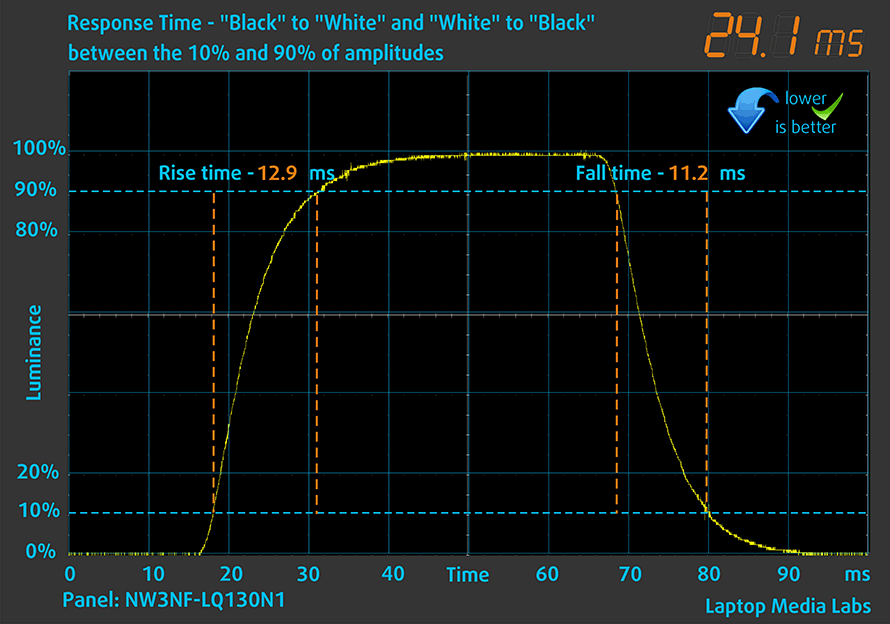
After that, we test the reaction time of the pixels with the usual “Gray-to-Gray” method from 50% White to 80% White and vice versa between 10% and 90% of the amplitude.

Health impact – PWM / Blue Light
PWM (Screen flickering)
Pulse-width modulation (PWM) is an easy way to control monitor brightness. When you lower the brightness, the light intensity of the backlight is not lowered, but instead turned off and on by the electronics with a frequency indistinguishable to the human eye. In these light impulses, the light/no-light time ratio varies, while brightness remains unchanged, which is harmful to your eyes. You can read more about that in our dedicated article on PWM.
Dell Latitude 13 7320 Detachable’s display doesn’t use PWM above 130 nits. Below that, the frequency of the flickers is about 2500 Hz, which can be felt by the more sensitive people out there. Our Health-Guard profile completely eliminates the issue.
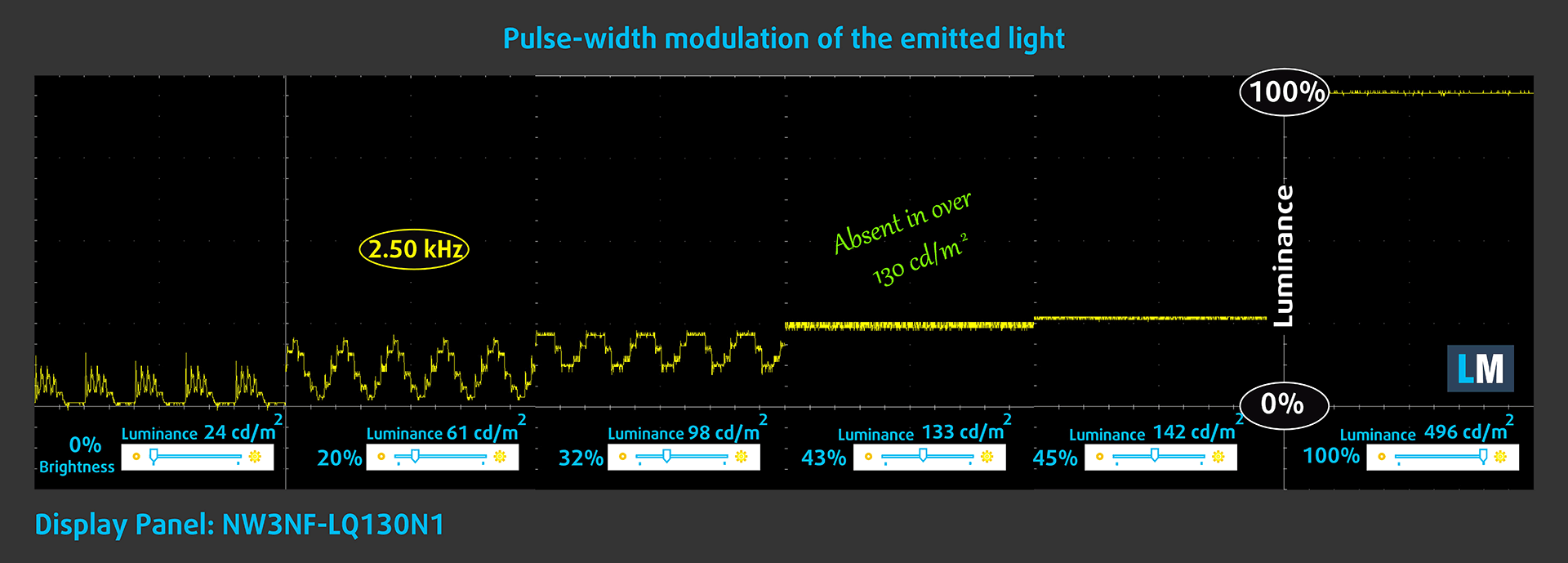
Blue light emissions
Installing our Health-Guard profile not only eliminates PWM but also reduces the harmful Blue Light emissions while keeping the colors of the screen perceptually accurate. If you’re not familiar with the Blue light, the TL;DR version is – emissions that negatively affect your eyes, skin, and your whole body. You can find more information about that in our dedicated article on Blue Light.
Buy our profiles
Since our profiles are tailored for each display model, this article and its respective profile package are meant for Dell Latitude 13 7320 Detachable configurations with 13.0″ NW3NF LQ130N1 (INT3480) (FHD+, 1920 x 1280) IPS panel.
*Should you have problems with downloading the purchased file, try using a different browser to open the link you’ll receive via e-mail. If the download target is a .php file instead of an archive, change the file extension to .zip or contact us at [email protected].
Read more about the profiles HERE.
Además de recibir perfiles eficientes y respetuosos con la salud, al comprar los productos de LaptopMedia también apoyas el desarrollo de nuestros laboratorios, donde probamos los dispositivos para elaborar las reseñas más objetivas posibles.

Trabajo de oficina
El perfil Trabajo de Oficina debería ser utilizado sobre todo por usuarios que pasan la mayor parte del tiempo mirando trozos de texto, tablas o simplemente navegando. Este perfil pretende ofrecer una mayor nitidez y claridad manteniendo una curva de gamma plana (2,20), una temperatura de color nativa y colores perceptualmente precisos.

Diseño y juego
Este perfil está dirigido a los diseñadores que trabajan con los colores de forma profesional, y también para juegos y películas. Design and Gaming lleva a los paneles de visualización a sus límites, haciéndolos tan precisos como sea posible en el estándar sRGB IEC61966-2-1 para Web y HDTV, en el punto blanco D65.

Salud-Guardia
Salud-Guardia elimina la perjudicial Modulación de Ancho de Pulso (PWM) y reduce la luz azul negativa que afecta a nuestros ojos y a nuestro cuerpo. Al estar adaptado a cada panel, consigue mantener los colores perceptivamente precisos. Salud-Guardia simula el papel, por lo que la presión sobre los ojos se reduce considerablemente.
Consigue los 3 perfiles con un 33% de descuento
Sound
Dell Latitude 13 7320 Detachable’s speakers are relatively good. However, there are deviations across the entire frequency spectrum, and the maximum volume is rather low.
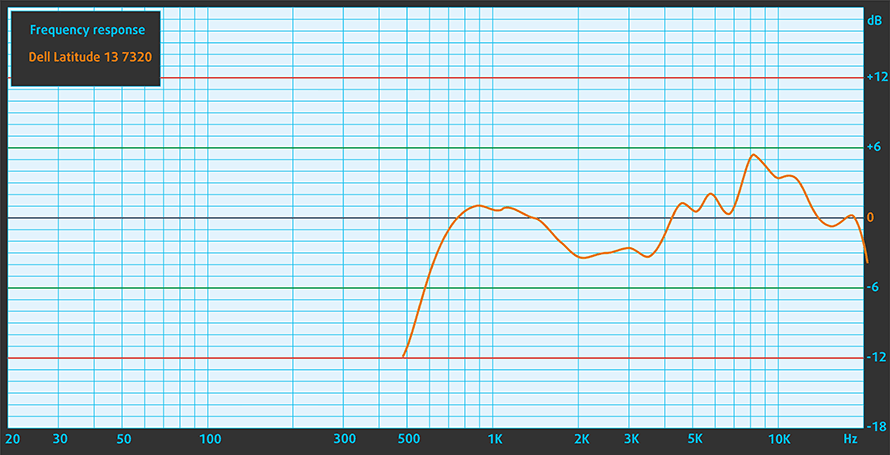
Drivers
All of the drivers and utilities for this notebook can be found here: https://www.dell.com/support/home/en-us/product-support/product/latitude-13-7320-detachable-laptop/drivers
Battery
Now, we conduct the battery tests with Windows Better performance setting turned on, screen brightness adjusted to 120 nits, and all other programs turned off except for the one we are testing the notebook with. Here, the battery capacity is 40Wh. It lasts for 13 hours and 42 minutes of Web browsing, and 11 hours and 7 minutes of video playback.
Para simular las condiciones de la vida real, utilizamos nuestro propio script de navegación automática por más de 70 sitios web.

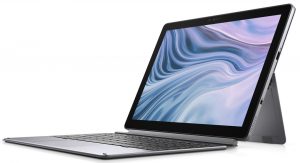
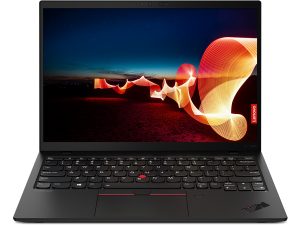
Para cada prueba de este tipo, utilizamos el mismo vídeo en HD.



CPU options
This rather special device can be found with the Core i3-1110G4, Core i5-1130G7, Core i5-1140G7, and Core i7-1180G7. They are low-TDP variants of the main Tiger Lake lineup.
Los resultados proceden de la prueba de CPU Cinebench 20 (cuanto mayor sea la puntuación, mejor)
Los resultados proceden de nuestra prueba de referencia de Photoshop (cuanto más baja sea la puntuación, mejor)
GPU options
All of the options include only integrated graphics like the Iris Xe Graphics G4 and G7. The latter comes with either 80 or 96EUs.
Los resultados proceden de la prueba 3DMark: Time Spy (Graphics) (cuanto mayor sea la puntuación, mejor)
Los resultados proceden de la prueba 3DMark: Fire Strike (Graphics) (cuanto mayor sea la puntuación, mejor)
Los resultados proceden de la prueba comparativa Unigine Superposition (cuanto mayor sea la puntuación, mejor)
Gaming tests

| CS:GO | HD 1080p, Low (Check settings) | HD 1080p, Medium (Check settings) | HD 1080p, MAX (Check settings) |
|---|---|---|---|
| Average FPS | 110 fps | 88 fps | 53 fps |

| DOTA 2 | HD 1080p, Low (Check settings) | HD 1080p, Normal (Check settings) | HD 1080p, High (Check settings) |
|---|---|---|---|
| Average FPS | 95 fps | 57 fps | 37 fps |
Temperatures and comfort
Max CPU load
In this test we use 100% on the CPU cores, monitoring their frequencies and chip temperature. The first column shows a computer’s reaction to a short load (2-10 seconds), the second column simulates a serious task (between 15 and 30 seconds), and the third column is a good indicator of how good the laptop is for long loads such as video rendering.
Average core frequency (base frequency + X); CPU temp.
| Intel Core i7-1180G7 (9W) | 0:02 – 0:10 sec | 0:15 – 0:30 sec | 10:00 – 15:00 min |
|---|---|---|---|
| Dell Latitude 13 7320 Detachable | 2.80 GHz @ 66°C @ 27W | 2.47 GHz @ 99°C @ 22W | 1.63 GHz @ 75°C @ 12W |
Given the fact that this device is a tablet, perhaps the clock speed and the temperatures are okay. Realistically speaking, it just doesn’t have too much space inside and a big enough cooling capacity.
Comfort during full load
Thankfully, the device is pretty quiet even under extreme loads. And the hottest spot on the back was slightly exceeding 40°C.
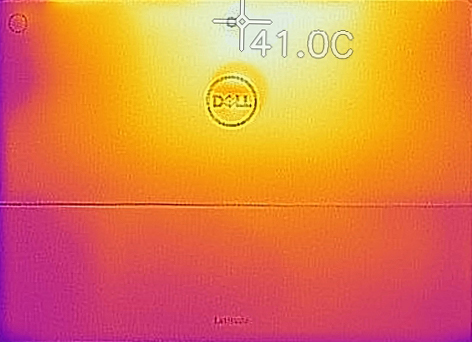
Verdict
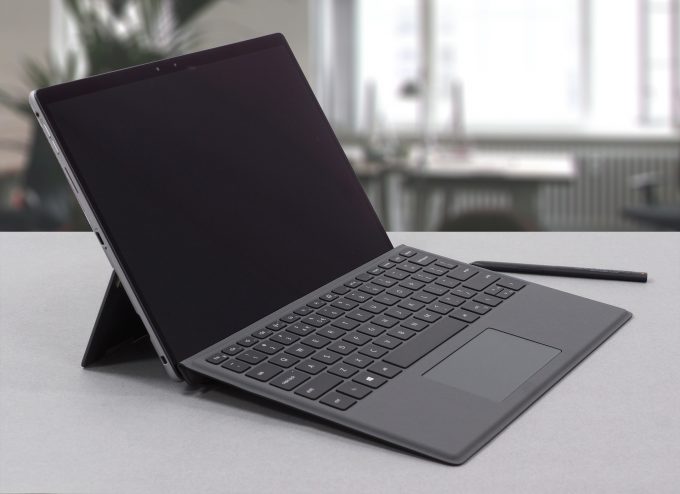 A key component in making devices such as the Latitude 13 7320 Detachable more popular is definitely the launch of Windows 11. This is because the structure of Windows 10 is not nearly as optimized for predominantly touch input, as Android and what now is called iPadOS. On the other hand, Dell has made what they can do to make your life easier. First of all, they provide a stylus inside the box.
A key component in making devices such as the Latitude 13 7320 Detachable more popular is definitely the launch of Windows 11. This is because the structure of Windows 10 is not nearly as optimized for predominantly touch input, as Android and what now is called iPadOS. On the other hand, Dell has made what they can do to make your life easier. First of all, they provide a stylus inside the box.
Also, the detachable keyboard feels really good. Well, if you exclude the latency of the touchpad. Ultimately, the unit goes into something like “sleep” mode, when you don’t use it for about 20-30 seconds.
Dell Latitude 13 7320 Detachable’s touchscreen IPS panel has wide viewing angles, high maximum brightness, and a very good contrast ratio. Although its backlight uses PWM, it does so only until the brightness gets up to 130 nits. If you want to be completely safe, you can get our Health-Guard profile. Speaking of profiles, our Gaming and Web design profile helps this device reach a great color accuracy, which bodes well with the 100% sRGB color gamut coverage.
Interestingly, the good display is paired with pretty capable hardware, albeit one with low power limits. Considering its form factor, the notebook/2-in-1/detachable shows decent performance and great battery life, exceeding 13 hours of Web browsing usage, and 11 hours of video playback.
However, on the question, are detachable and tablets are the future of computing, probably yes, but we are nowhere near this time. And the reason for that is simple – expansion and connectivity. If laptops are getting closer and closer to replacing desktop computers, tablets are staying put. On the other side, in the business world, we think that they will fight with foldables and 2-in-1s, and the result from that battle is currently unpredictable.
You can check the prices and configurations in our Specs System: https://laptopmedia.com/series/dell-latitude-7320-detachable/
Pros
- Light and strong metal chassis
- Covers 100% of sRGB colors (SHP14D2) and has a great color accuracy with our profiles
- 12+ hours of battery life
- Windows Hello thanks to the IR face recognition
- Dual Thunderbolt 4 connection
- Optional LTE support
- Good detachable keyboard + Pen inside the box
- 8MP back camera + 8MP on the front
Cons
- Soldered memory
- Limited I/O with no SD card reader, nor USB Type-A port
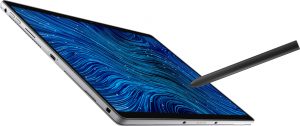
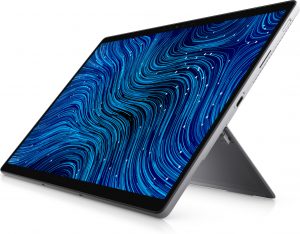
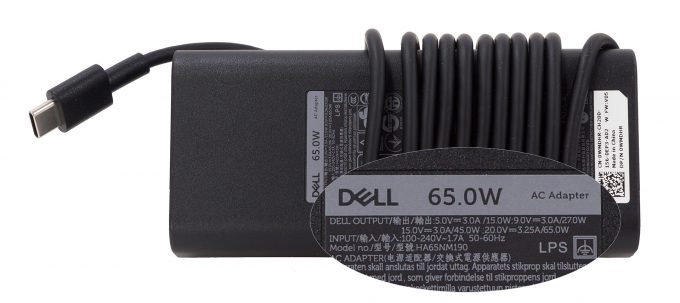
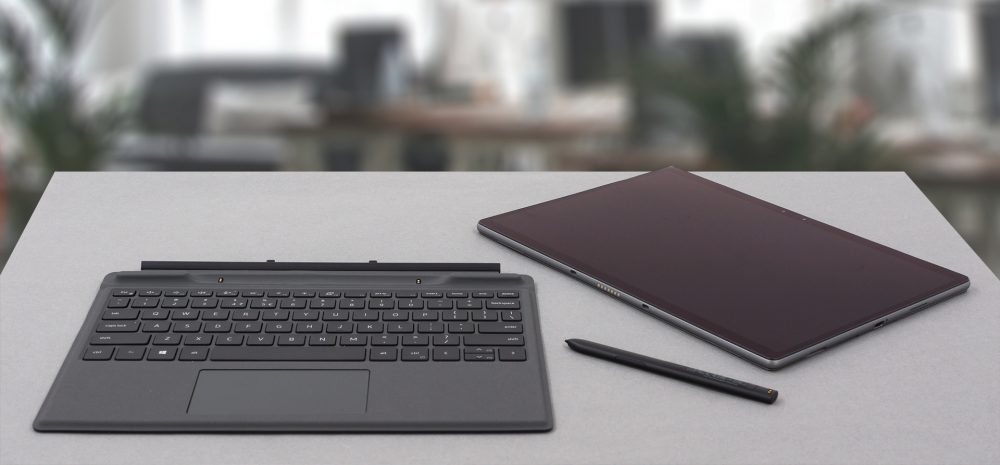
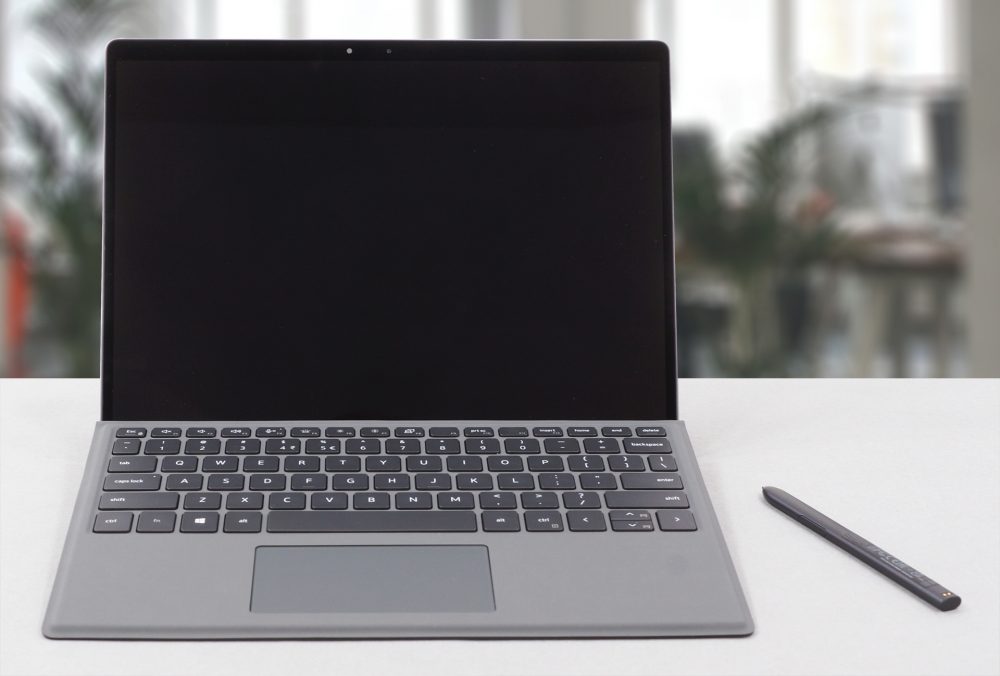
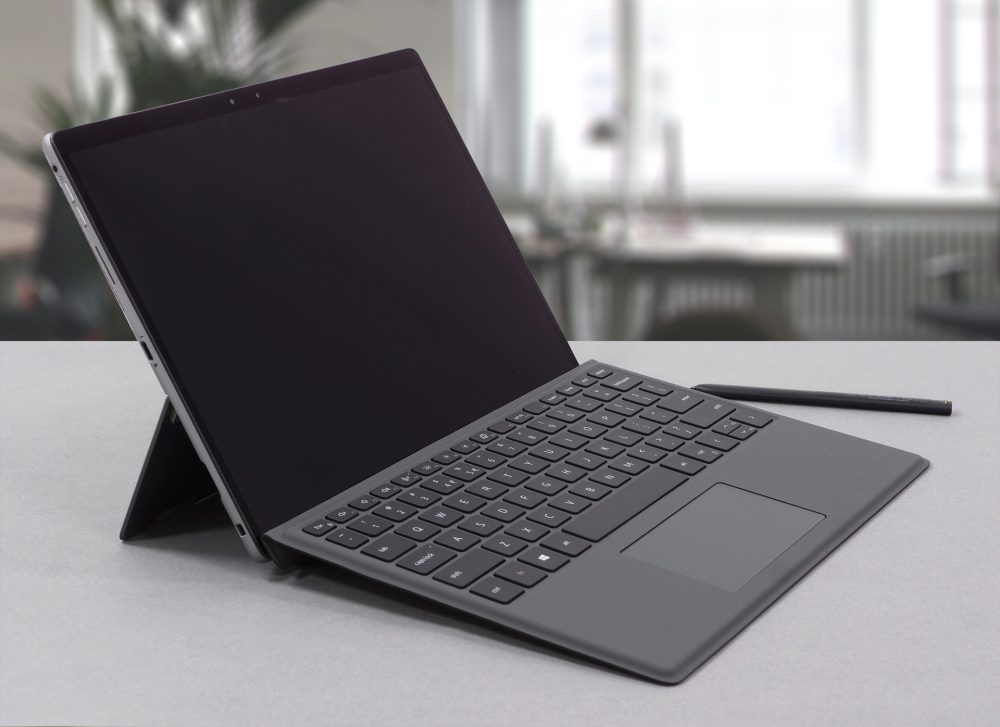

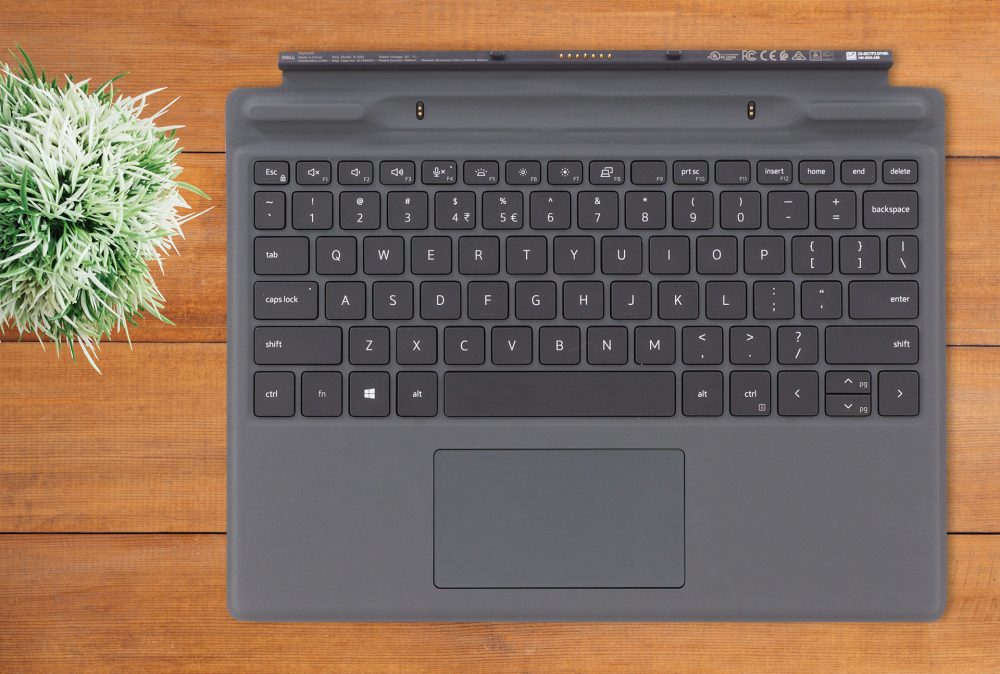
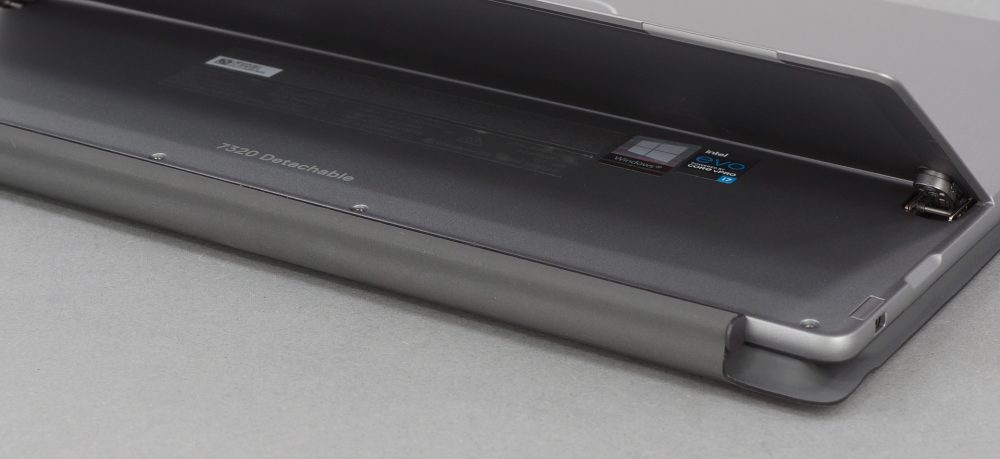


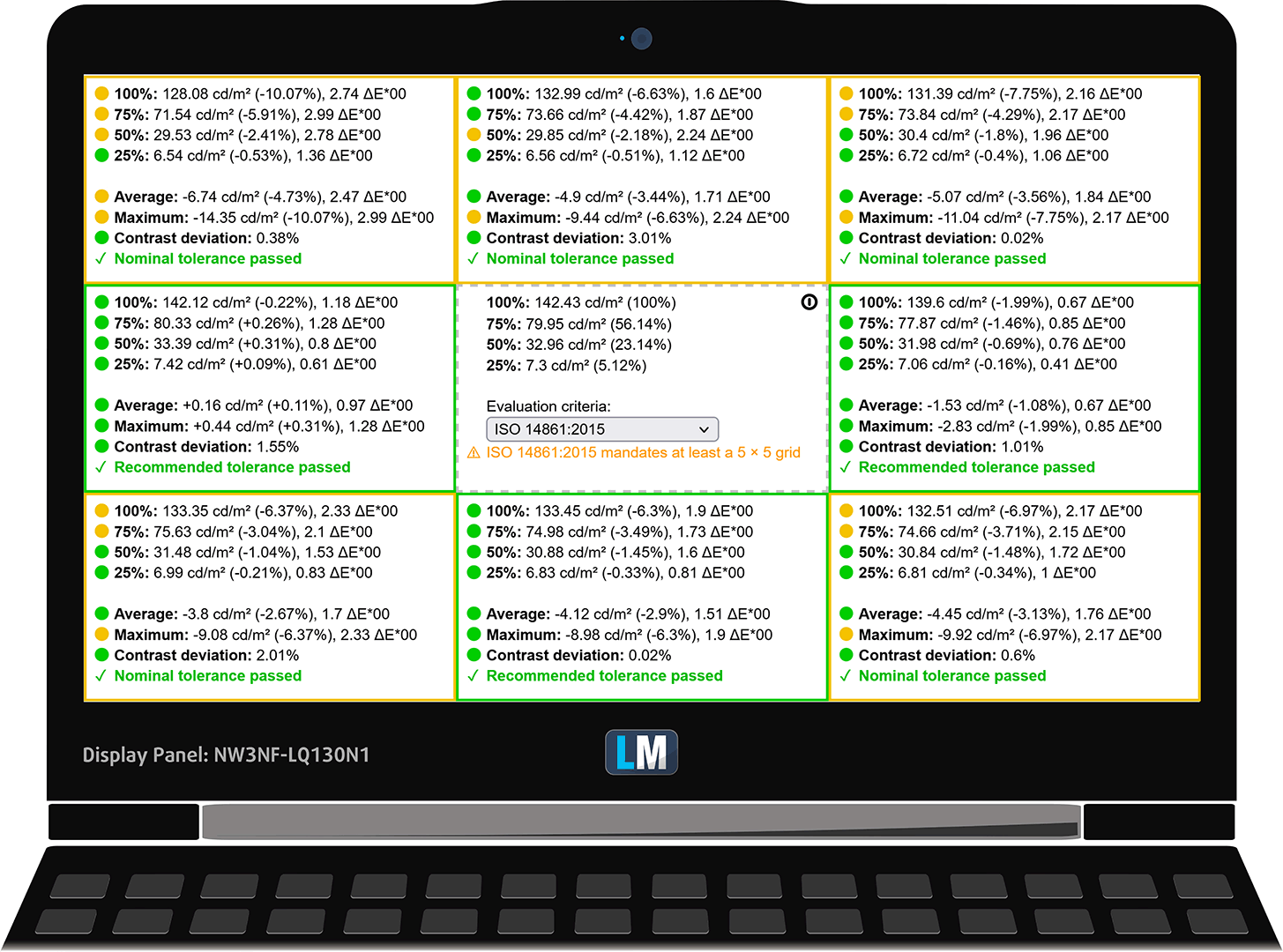

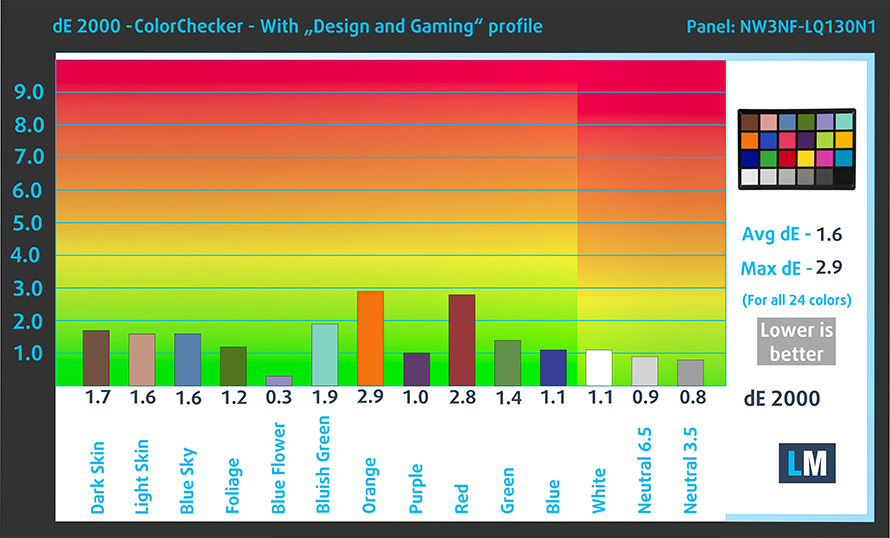

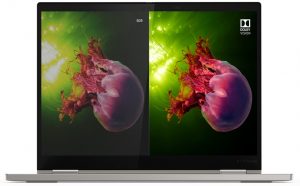










I have one of these for work and I have say I’m very impressed by it. The battery isn’t amazing but when you’re using the camera all day and the built in cellular then it’s hardly surprising, the plus side to that is that it charges up very quickly even with a car charger. The only thing I’d say let’s it down is it’s boot time but other than that it’s a nifty little thing with more than enough power for day to day tasks.